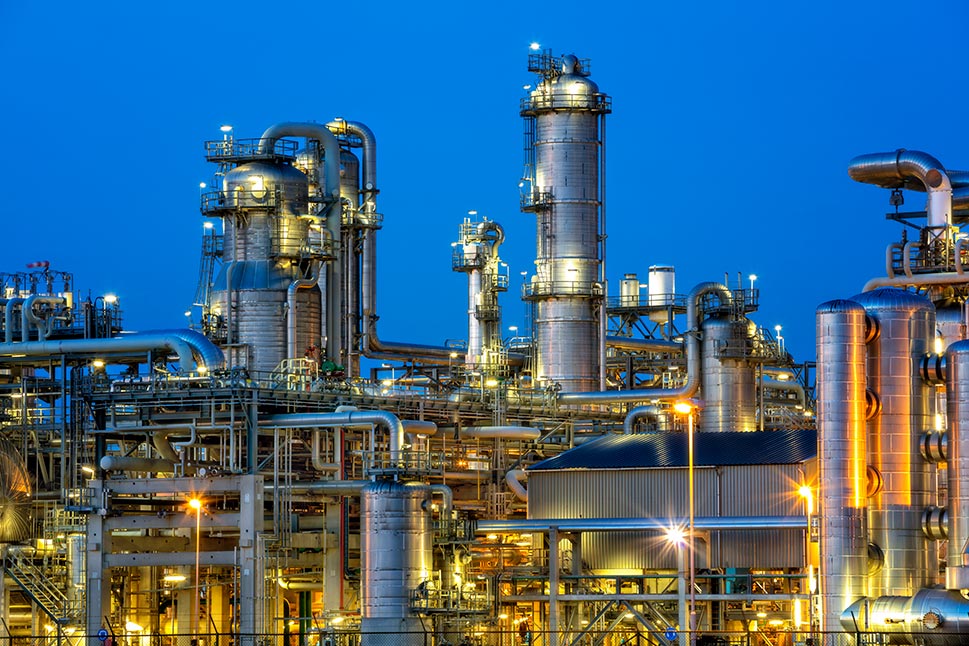The market for fuel oil is shrinking, and many refineries are also under pressure to reduce plant emissions and meet product sulfur limits. Residue Gasification Technology is a clean, efficient, reliable and proven technology that can help address these pressures. When integrated with other upgrading and treating technologies, it can convert a wide range of low-value refinery residues and asphaltenes into syngas for:
- Integrated gasification combined-cycle power generation with optional carbon dioxide capture.
- Hydrogen production.
- Petrochemical production.
It also creates the opportunity to use heavier, less-expensive crudes and benefit from deeper conversion.
Air Products’ turnkey solution
- Design and engineering
- Commissioning and start-up
- Experience transfer
- Master planning
- Training
Delivering high efficiency and yield
Within the Residue Gasification Process system, hydrocarbon chains are partially oxidized in a refractory-lined reactor. This results in a high yield of syngas (carbon monoxide and hydrogen) and generates heat. The unit uses special burner and reactor designs to achieve high thermal efficiency and low soot levels. The syngas is cooled in an adjacent syngas effluent cooler, which produces high-pressure, saturated process steam that can help to lower plant operating costs.
Why select Residue Gasification Technology?
Unique and proven
Residue Gasification Process units use special burner and reactor designs backed by half a century of experience. Over 170 Residue Gasification Process reactors have been built and 96 are operating today.
Residue Gasification Process technology can process a wide range of feedstocks, including highly viscous, high-sulfur residues. Further benefits include:
- Low fresh water consumption
- Low soot formation (<1 mg/Nm³ of soot in raw syngas)
- Enhanced syngas yield (typically >2,600 Nm³ syngas per ton of feedstock)
- Enhanced thermal efficiency through the syngas cooling process (with high-pressure steam generation)
Continuous design improvement
As an owner and operator and through close partnerships with other users, Air Products and Shell have the insight and experience to deliver. We record innovations and improvements in a lessons-learned database for the benefit of all licensees and to improve our master design. Focusing on continuous improvement through innovation and partnership helps us to achieve longer continuous runs and lower maintenance costs.
World-class support
Our global Air Products Syngas Solutions technical service center provides dedicated life-cycle support for lifetime assurance, including design, simulation, start-up assistance and training, and long-term operational assistance. We facilitate global technology user conferences that seek to build user communities and accelerate learning.
